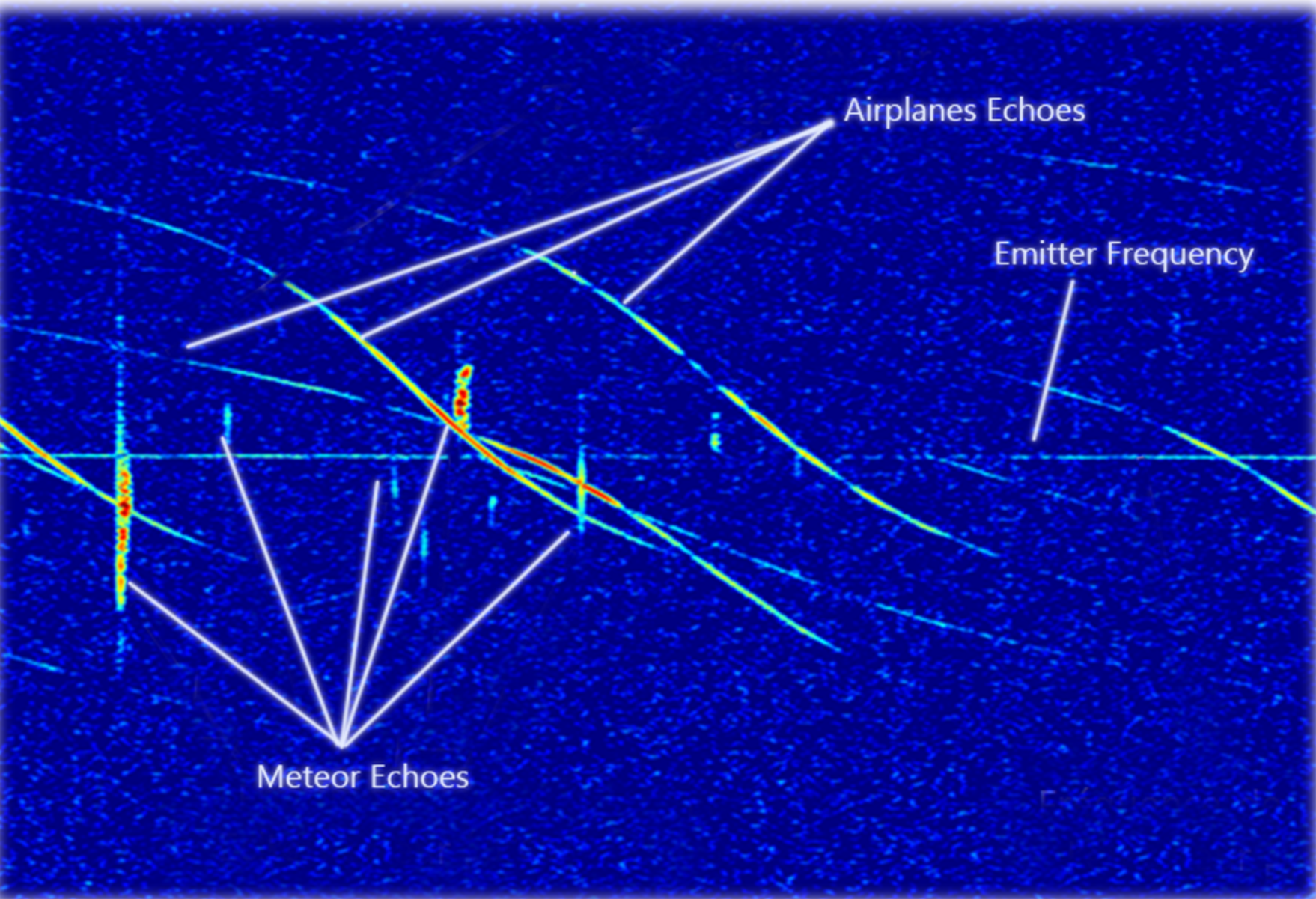The BRAMS network consists of one beacon in Dourbes and about 35 receiving stations that observe permanently. Each station records continuously a bandwidth of 2.5 kHz more or less centered on 49.97 MHz, the beacon frequency. The data are stored in WAV (sound) files of 5 minutes each, and visualized as spectrograms. In total about 10.000 files (288 files per station) are generated per day. Analyzing all observations manually is practically undoable. For the underdense meteors, the signature is simple and the automatic detection algorithms that we use, work quite well [Calders & Lamy, 2014]. However during meteor showers, more complex shapes appear from overdense meteors. In those cases, the human eye remains the best detector. So in August 2016 we launched, in collaboration with Zooniverse, a citizen science project called the Radio Meteor Zoo. In this citizen science project, volunteers help us identify meteors in our observations by drawing a rectangle around everything they consider to be a meteor. Each spectrogram is seen by 10 different volunteers, and aggregated according to the procedure described in [Calders et al, 2016].
So in August 2016 we launched, in collaboration with Zooniverse, a citizen science project called the Radio Meteor Zoo. In this citizen science project, volunteers help us identify meteors in our observations by drawing a rectangle around everything they consider to be a meteor. Each spectrogram is seen by 10 different volunteers, and aggregated according to the procedure described in [Calders et al, 2016].
Results
At the time of writing, almost 14.000 registered volunteers have analyzed at least one spectrogram on the Radio Meteor Zoo. Here is an overview of the meteor showers that have been analyzed:
2016
- Perseids : Humain, Uccle, Ophain, Ottignies, Grimbergen, Overpelt, Humbeek
- Geminids : Humain, Ottignies, Overpelt, Tintignies, Neufchâteau
2017
- Quadrantids : Humain, Kampenhout
- Lyrids : Humain
- Perseids : Humain, Ottignies, Overpelt
- Alpha Monocerotids : Humain
- Geminids : Humain, Overpelt
2018
- Quadrantids : Humain
- Lyrids : Humain
- Zeta Perseids : Humain
- Perseids : Humain
- Draconids : Humain
- Orionids : Humain
- Geminids : Humain
2019
- Quadrantids : Humain
- Lyrids : Humain
- zeta Perseids : Humain
- Perseids : Humain
- Draconids : Humain
- Alpha Monocerotids : Humain
- Geminids : Humain, Sivry, Overpelt, Ophain
2020
- Quadrantids : Humain
- Lyrids : Humain
- Arietids/zeta Perseids : Humain
- Perseids : Humain
- Draconids : Humain
- Orionids : Humain
- Geminids : Humain, Oudsbergen
2021
- Quadrantids : Humain
- Lyrids : Humain
- Arietids/zeta Perseids : Humain
Detailed discussions of the results can be found on the Results page of the Radio Meteor Zoo website.
Future plans
The next step is to correct the activity curve for parameters such as the radiant height and the sensitivity of the receiver. The Observability Function (OF [Verbeeck, 1997]) represents the sensitivity of a particular forward scatter setup to detect underdense meteors of a given shower at a given time t. If the OF at time t1 is twice as big as the OF at time t2, and the meteor activity is constant, then the set-up will observe twice as many shower meteors at t1 than at t2. The OF is a number that varies with each configuration of the transmitter and receiver (each receiving station in the case of BRAMS) and with the position of the radiant of the meteor shower (hence with time).
We are also investigating if we can train a convoluted neural network (CNN) to automatically detect most of the (overdense) meteors. The aggregated results from the RMZ can be used as a training set for the machine learning algorithm. Once this gives satisfying results, we can change the task of the RMZ volunteers from drawing rectangles into verifying if the rectangles are drawn correctly.
Read more
Calders S. and Lamy H. (2014). “Automatic detection of meteors in the BRAMS data”. In Rault J.-L. and Roggemans P., editors, Proceedings of the International Meteor Conference, Giron, France, 18– 21 September 2014. IMO, pages 194–196. http://cdsads.u-strasbg.fr/pdf/2014pim4.conf..194C
Calders S., Verbeeck C., Lamy H., and Martinez Picar A. (2016). “The Radio Meteor Zoo: a citizen science project”. In Roggemans A. and Roggemans P., editors, Proceedings of the International Meteor Conference, Egmond, the Netherlands, 2–5 June 2016. IMO, pages 46–49. http://cdsads.u-strasbg.fr/pdf/2016pimo.conf...46C
Calders S., Lamy H., Martinez Picar A., Tétard C., Verbeeck C., Gamby E. (2017). “The Radio Meteor Zoo: Involving citizen scientists in radio meteor research”. In Gyssens, M. and Rault J.-L., editors, Proceedings of the International Meteor Conference, Petnica, Serbia, 21-24 September 2017. IMO, pages 13-15. http://cdsads.u-strasbg.fr/pdf/2018pimo.conf...13C
Verbeeck C. (1997). “Calculating the sensitivity of a forward scatter setup for underdense shower meteors”. In Knöfel A. and Roggemans P., editors, Proceedings of the International Meteor Conference, Apeldoorn, the Netherlands, 19–22 September 1996. IMO, pages 122–132. http://cdsads.u-strasbg.fr/pdf/1997pimo.conf..122V






